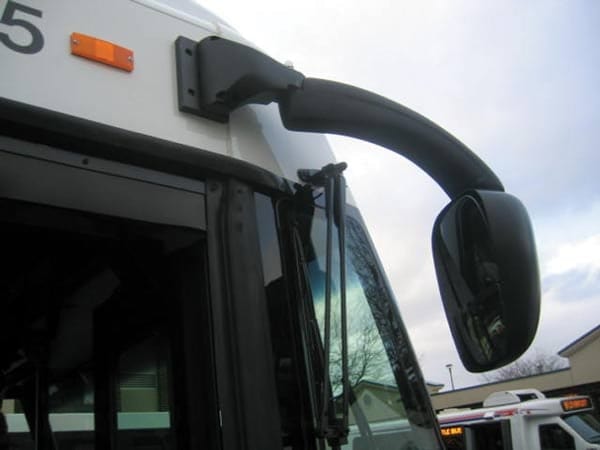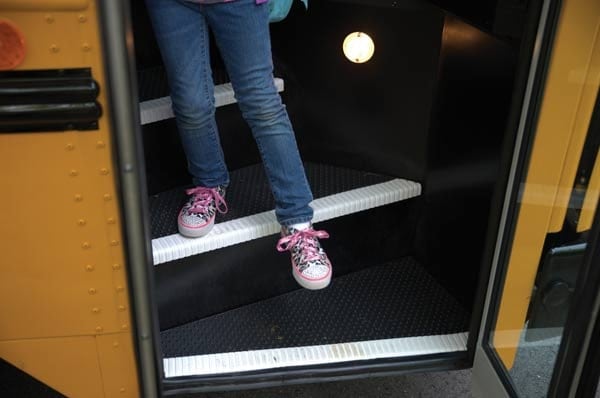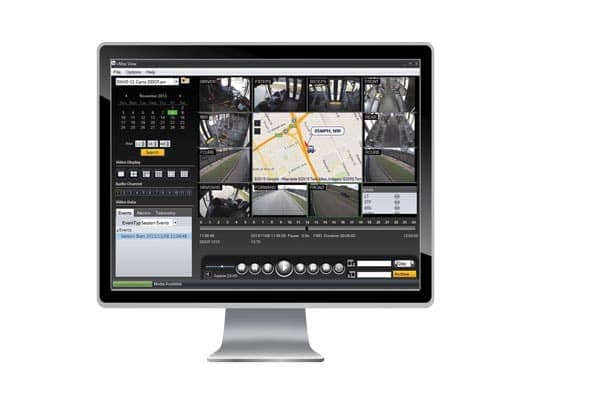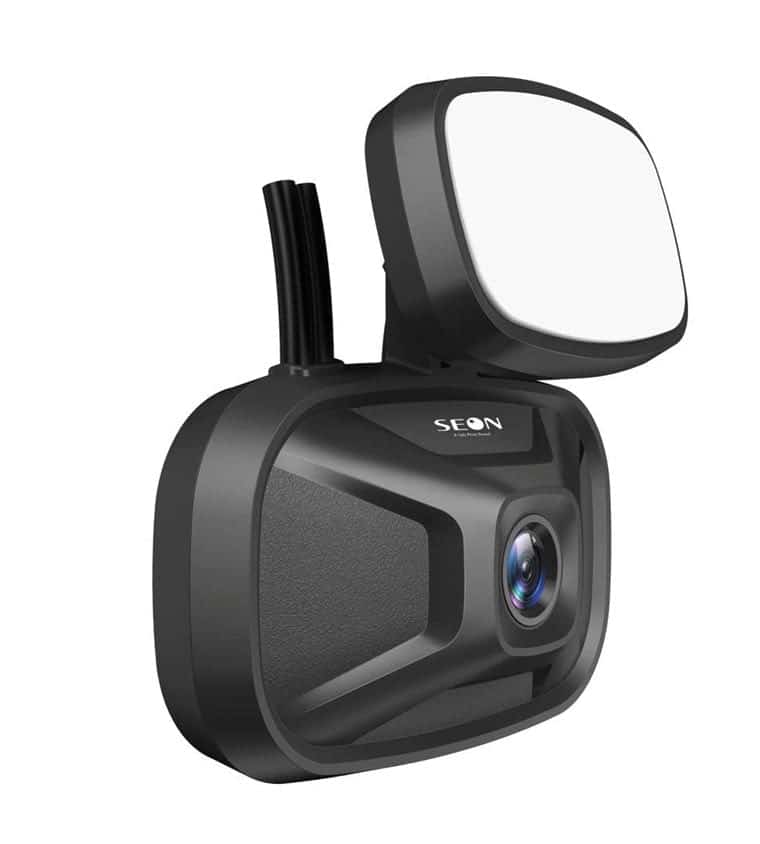Fleet safety affects us all. Tools and solutions to mitigate fleet risks and improve safety outcomes range from the sensible, such as slip resistant treads, to the high tech, such as new, ‘smart’ camera-based systems and real-time vehicle and driver diagnostics.
By John Knox and Martin Demers
According to the National Highway Traffic Safety Administration (NHTSA), traffic fatalities in the U.S. jumped 7.7 percent in 2015 compared to the previous year. Further data indicates that 94 percent of crashes are tied to human error or faulty decision-making.
Fleet safety is therefore a number one priority for all sorts of fleets—public transit, emergency, work and industrial, military vehicles and more. Each of these fleet verticals is focusing their safety efforts on improving driver behavior and employing enhanced tools and technologies designed to prevent crashes and protect occupants and others. It therefore stands to reason that, in the waste management sector, we can learn much about safety from fleets in other industries.
Bus and Transit Vehicles—Pedestrian Safety and Blind Spots
According to the American Public Transportation Association (APTA), U.S. transit systems operate more than 130,000 vehicles in a typical peak period and carry passengers on more than 10 billion trips totaling more than 55 billion passenger miles per year.1 That adds up to a lot of pedestrian exposure to public transport vehicles. Correspondingly, pedestrian and passenger safety are a top priority for these fleets.

Monitoring.
For example, in 2009 there were 2,489 at-fault transit bus crashes.2 Additionally, an average of 42 pedestrians and cyclists are killed by transit buses each year.3 To ensure public safety around transit vehicles, mitigating or eliminating blind spots significantly reduces safety risks. Blind spot mitigation includes the use of smaller mirrors and adjustments to their placement to improve driver visibility. Also, newer wide-angle convex mirrors provide a 25 percent gain in viewing area versus conventional convex mirrors.
While mirrors can improve visibility along the sides of the vehicle, they can also, conversely, impede vision. For example, mirrors can potentially block a 12-inch wide field of view as a bus turns left. One emerging technology for the elimination of blind spots is the use of camera systems. In a 2010 study by the Florida Department of Transportation, wide-angle camera views were found to eliminate 100 percent of blind zones on the left and right sides of a vehicle to ensure expanded observation of boarding and late arriving passengers, and increased lane change visibility. Camera systems can also provide better visibility in dark or inclement weather conditions than applicable mirrored solutions.
Emergency Vehicles—Complete Visibility When Reversing
Drivers of emergency vehicles, such as fire trucks and ambulances, typically face the most arduous safety requirements as they are required to respond as quickly as possible to situations that are often life-threatening. All too frequently these include backing up a vehicle into obstacle-ridden or poor visibility areas. Industry estimates suggest that approximately 30 percent of all accidents occur when vehicles are moving in reverse, which makes these accidents, and the fact that they are usually preventable, a top priority.

There is a reason why backing up, especially under emergency duress, is more risk-prone. Firstly, and most obviously, a driver and his seat face forward making it difficult to turn to look and see behind the vehicle. Secondly, emergency vehicles, by virtue of their size and construction, will have large blind areas, which impede visibility. Thirdly, mirrors, though helpful, can distort views and won’t necessarily cover all angles of view.
While backup collisions are less likely to cause fatal injury, they do account for a high percentage of emergency vehicle crash repair costs. As a result, emergency services departments tend to have well-established policies and tools for mitigating reversing incidents.
Backup cameras typically used by fire engines can help eliminate the dings, scrapes and mirror clips common when easing large vehicles into tight spaces. Newer ‘360 degree’ vision systems provide wide angle views of each side of the vehicle stitched together to display a bird’s eye view to improve driver visibility around the entire vehicle. When combined with collision avoidance systems with object detection sensors and audible alerts for drivers, this technology can significantly reduce the likelihood of collisions by vastly improving driver visibility.
Military Vehicles—Preventative Maintenance and Diagnostics
Military fleet managers are tasked with stringent asset lifecycle management to get the maximum value and performance from their vehicles. A military operation relies on a broad range of equipment to conduct training and operations at home and abroad. As each piece of equipment contributes to either capacity or capability, keeping this vital equipment in good repair is critical to both success and safety.

Systems.

New military fleet systems can now manage a fleet’s uptime by wirelessly connecting onboard computing (OBC) devices and software analytics to ensure an immediate communications and diagnosis of the vehicle’s condition for both preventative and ongoing maintenance. Developed for ground combat vehicles operating in harsh military environments, these OBC solutions provide drivers and back-office systems users with unprecedented information about a truck’s diagnostics, vehicular telemetry, driver activities and other information vital to optimizing vehicle safety and productivity.
The OBCs typically connect to the vehicle’s engine control module (ECM), and record activities such as speed, location, idling time, engine issues, emissions, total mileage, and thousands of data points that are continuously read from the vehicle’s engine and reported in real-time. They can further notify dispatch or control operations of the severity of the issue and, within seconds, provide guidance to fleet maintenance and operations management. Detecting and diagnosing potential equipment failures measurably enhance both fleet safety and reliability.
Work/Industrial Trucks—Worker Safety
Work or industrial fleets can include utility, crane, lube, rail and other service trucks. Keeping their drivers and workers safe in and around the vehicle requires careful consideration of finishes and functional features. For example, any tread or walking surfaces should be slip-resistant.
Secure footing and stability are fundamental to job performance on fuel tank steps, deck plates, chassis frame ladders, sliding ramps, platforms and stairs. These fall prevention solutions should incorporate a self-cleaning design that helps remove debris while keeping feet safely on the tread surface. Ergonomic ladders racks can also reduce the chance of back strain common when reaching and twisting to remove ladders from high roof work trucks.
We know the vast majority of fatal accidents can be attributed to human error. As a result, driver behavior monitoring and video-based coaching programs have become commonplace for the work truck and truck and trailer markets. Preventing an accident from happening in the first place is the best way to improve driver and pedestrian safety. Driver safety programs can now use video clips of the driver and the road ahead—combined with vehicle telematics such as speed, acceleration, hard braking and sharp turns—to identify risky drivers and proactively correct poor driving behaviors. Video evidence can also be used to reduce insurance costs by exonerating drivers assessed to be at-fault in collisions.
Enhanced Knowledge
Fleet safety affects us all. Tools and solutions to mitigate fleet risks and improve safety outcomes range from the sensible, such as slip resistant treads, to the high tech, such as new, ‘smart’ camera-based systems and real-time vehicle and driver diagnostics.
Enhanced safety directly correlates to enhanced knowledge. Knowledge of what’s going on around the vehicle at all times to ensure complete visibility. Knowledge of how drivers are behaving and handling vehicles in order to better coach them. Knowledge of real-time vehicular diagnostics and operational issues so that appropriate remedial actions can be taken. And knowledge of how to modify vehicle finishes to mitigate risk of accident and injury. Sharing this knowledge makes us all safer.
John Knox is the President and CEO of Safe Fleet (Belton, MO), a family of best-in-class companies dedicated to becoming the leading global provider of safety solutions for fleet vehicles. These brands serve numerous markets including: emergency services, bus and rail, RV, truck and trailer, work truck, waste, military and industrial. John was most recently Chairman, President and CEO of ADCO Global and Chairman of Royal, which bought ADCO Global in 2013. He has served on the Board of Directors for Velsicol Corporation, Rutherford Chemicals, and Strive Logistics. He can be reached at [email protected].
Martin Demers is VP of Safe Fleet for FleetMind (Montreal, QC), a Safe Fleet brand company, and is a long-time technology industry executive. Under his leadership, FleetMind has grown into the leading onboard computing (OBC) solutions provider for waste and recycling fleets. Martin has often been published in industry publications including FleetOwner Magazine, Trucking Info Magazine and RFID Journal. He is a frequent speaker at technology and waste management events. He can be reached at [email protected].
Notes
2011 Public Transportation Fact Book, 62nd Edition, APTA, February 2011
“Evaluation of Camera-based Systems to Reduce Transit Bus Side Collisions”, FDOT Research Center, March 2010
Fatality Analysis Reporting System (FARS) Database, NHTSA
